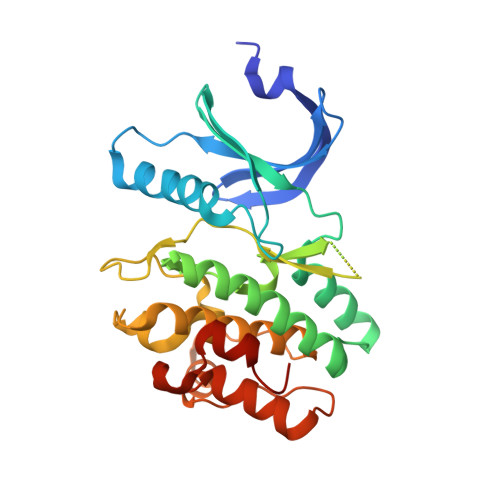Structure and inhibition of the human cell cycle checkpoint kinase, Wee1A kinase: an atypical tyrosine kinase with a key role in CDK1 regulation
Squire, C.J., Dickson, J.M., Ivanovic, I., Baker, E.N.(2005) Structure 13: 541-550
- PubMed: 15837193
- DOI: https://doi.org/10.1016/j.str.2004.12.017
- Primary Citation of Related Structures:
1X8B - PubMed Abstract:
Phosphorylation is critical to regulation of the eukaryotic cell cycle. Entry to mitosis is triggered by the cyclin-dependent kinase CDK1 (Cdc2), which is inactivated during the preceding S and G2 phases by phosphorylation of T14 and Y15. Two homologous kinases, Wee1, which phosphorylates Y15, and Myt1, which phosphorylates both T14 and Y15, mediate this inactivation. We have determined the crystal structure of the catalytic domain of human somatic Wee1 (Wee1A) complexed with an active-site inhibitor at 1.8 A resolution. Although Wee1A is functionally a tyrosine kinase, in sequence and structure it most closely resembles serine/threonine kinases such as Chk1 and cAMP kinases. The crystal structure shows that although the catalytic site closely resembles that of other protein kinases, the activation segment contains Wee1-specific features that maintain it in an active conformation and, together with a key substitution in its glycine-rich loop, help determine its substrate specificity.
Organizational Affiliation:
School of Biological Sciences and Centre for Molecular Biodiscovery, University of Auckland, Auckland 1001, New Zealand.
















